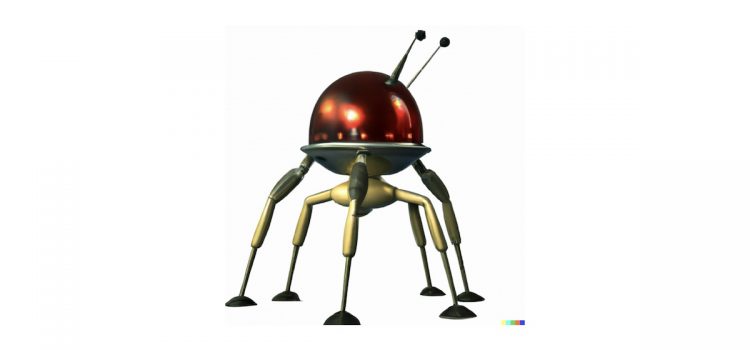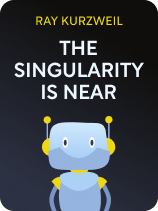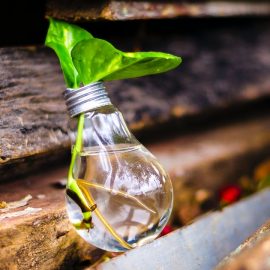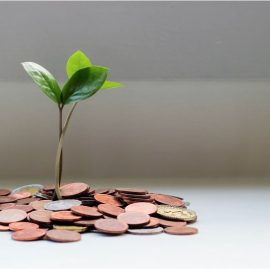

This article is an excerpt from the Shortform book guide to "The Singularity Is Near" by Ray Kurzweil. Shortform has the world's best summaries and analyses of books you should be reading.
Like this article? Sign up for a free trial here.
What are nanobots? How might they change the world? Where is nanobot technology today?
According to Ray Kurzweil, nanobots could make sweeping changes in manufacturing and medicine. He explains how nanotechnology has the potential to overturn our entire materials-based economy and even eliminate scarcity.
Read more to learn about nanobot technology and what Kurzweil sees in our future.
Ray Kurzweil on Nanobots
According to Ray Kurzweil, nanobots have the potential to make massive changes in the way the world works. So, what are nanobots? First, we have to understand the broader field of nanotechnology. Nanotechnology—molecular machines that operate on the smallest scale—can let us build products from elemental base components by putting them together atom by atom.
We’ll discuss the basic premise of nanotechnology, Kurzweil’s assessment of our progress toward achieving it, and some of the ways that molecular machines could both enhance and disrupt our everyday lives.
(Shortform note: The “nano” prefix in nanotechnology refers to a scale that is one-billionth the size of a basic unit of measurement. For example, a nanometer, used to measure the diameter of atoms, is one- billionth as long as a meter. Nanotechnology, therefore, refers to technology that can manipulate matter and make use of structures between 1 and 100 nanometers in size.)
The idea for nanotechnology rose from two separate engineering concepts—hypothetical machines that build copies of themselves, and microscopic machines that can build larger constructs by assembling their molecules and atoms. Kurzweil argues that we know these machines are possible because they already exist inside our cells as the proteins and enzymes that facilitate life. Developing artificial nanotechnology requires duplicating and improving upon systems that nature took billions of years to evolve, perhaps with carbon-based diamond components more durable than biological micromachines.
(Shortform note: Using biological machines as inspiration, current research on making nanoscale devices is exploring the use of DNA as both a structural framework and as a way to control proteins. If successful, this research could lead to the creation of fundamental machine building blocks that could then be linked together in more complex arrangements. In 2022, nanotech researchers working with RNA instead of DNA made steps toward a potential treatment for Covid-19 that could attack any variant of the virus despite its high mutation rate.)
The Rise of the Robots
Kurzweil envisions a tabletop device that can produce trillions of nanoscale robots (nanobots) on demand. These nanobots could use basic chemical ingredients to construct anything you own a software design of, be it a toothbrush, a t-shirt, or a turkey sandwich. The only cost of production would be the cost of raw ingredients—perhaps including garbage for your bots to recycle—plus the cost of the software design for whatever it is you want to build. Nanobots would also have medical uses, such as targeting and destroying pathogens more efficiently than your white blood cells or repairing damaged tissue faster than you could naturally heal.
Nanobots could eliminate scarcity while also upending the entire manufacturing and shipping industries. Kurzweil argues that, in such an economy, information will be the most important resource since the most vital commodity will be designs for nanobots to follow.
| Nanobots Versus 3D Printers A different approach to the one Kurzweil offers is 3D printing, which uses light and heat to fuse plastic filaments or resin into any shape with a preprogrammed design. Though the first 3D printers were developed in the 1980s, they didn’t become commercially available until the introduction of the open-source RepRap printer in 2006. Though not a nanoscale device, the RepRap is self-replicating in that it can be used to reproduce copies of any of its plastic components. Despite their many uses, 3D printers are expensive, energy-intensive, and limited in the range of materials they can use to print objects. Meanwhile, the nanobot revolution hasn’t arrived as soon as Kurzweil predicted. In the medical arena, nanobot technology is still in its initial testing phase and still lags behind other treatment options. Self-replicating nanobots that construct 3D objects haven’t gone beyond the science fiction stage, though chemists have made progress in designing molecular assembly lines in which microscopic machines can build new chemical strands out of fundamental atomic ingredients. The 2016 Nobel Prize in Chemistry was awarded to three scientists who made the first crucial steps in nanotechnology. |
Kurzweil points out that we’ve been on the road toward nanotechnology for some time. The size of circuit components has been shrinking for 100 years and is now crossing into the nanoscale range, creating ever faster and more efficient computers. Kurzweil believes nanobots will become viable in the 2020s. And, once we apply nanotech to manufacturing, the ongoing increase in computing power will spill into our ability to create things on demand. Nanobots may also be able to clean up the garbage and pollution we’ve created, reusing it to build the society of the future. With trillions of nanobots at our command, we’ll be able to reshape the world as we see fit, with all the benefits and hazards that entails.
(Shortform note: Ten years after his original predictions, Kurzweil revised his estimate for the advent of nanobots into the 2030s, describing their primary function as being a means to connect our brains to the digital world. The biggest roadblock in creating nanobots is synthesizing their components at a large enough scale to be useful. Researchers have created some simple nanomachines, such as microscopic switches and motors, but more complex mechanisms are still in the drawing board stage. However, the accelerating capabilities of AI provide powerful tools for modeling structures and devices on the microscopic level.)

———End of Preview———
Like what you just read? Read the rest of the world's best book summary and analysis of Ray Kurzweil's "The Singularity Is Near" at Shortform.
Here's what you'll find in our full The Singularity Is Near summary:
- The upcoming technological shift that will change everything
- The revolutions in bioscience, nanotechnology, and artificial intelligence
- How Kurzweil's predictions held up over time






